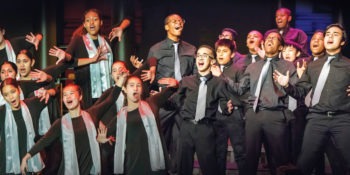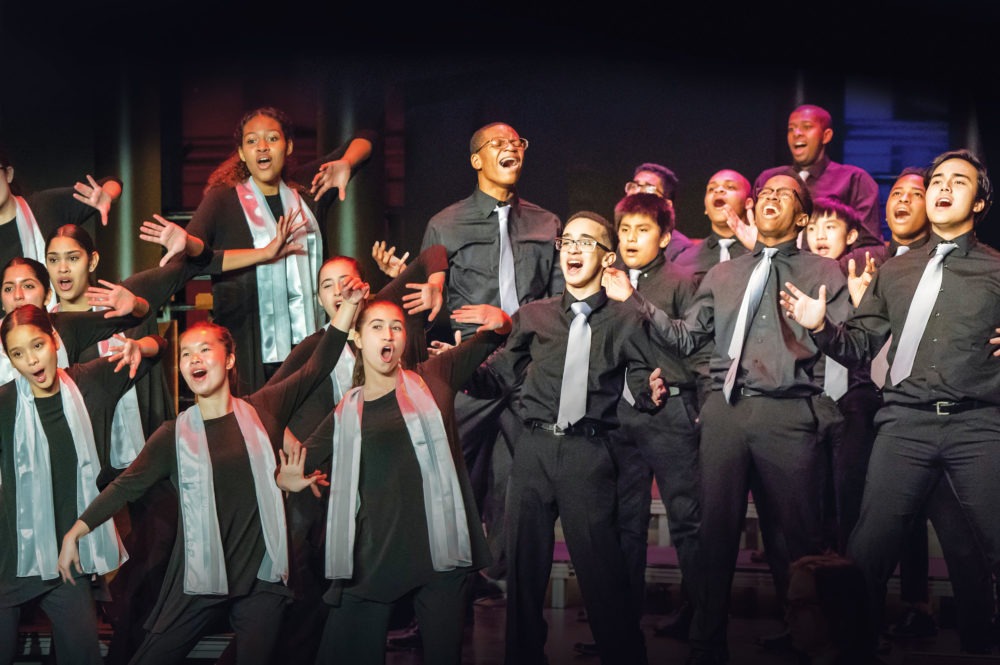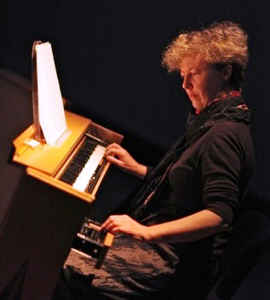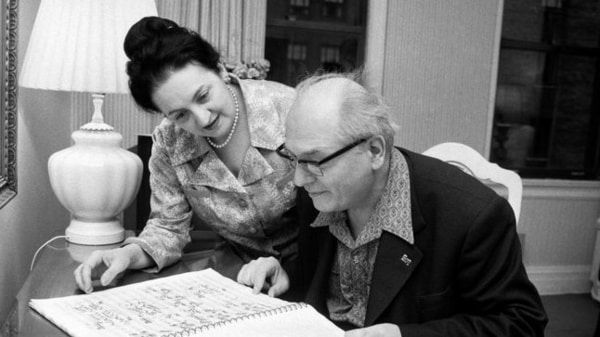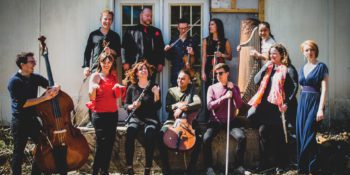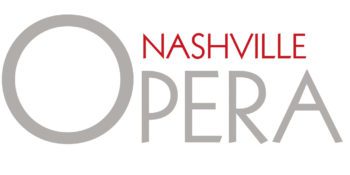Traditions in Music City
The Nashville Irish Seisiún Scene: McNamara’s Irish Pub and Restaurant
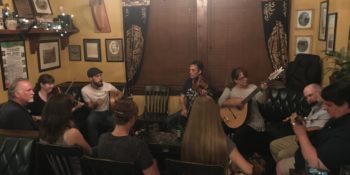
This article is part of a new series, Traditions in Music City, which will focus on the many and diverse musical traditions happening around Nashville. Instead of a critical focus, they will seek to communicate the history and sense of community in an event. Be sure to share and leave a comment at the end!
If you ask most people what they envision when you mention a traditional Irish seisiún (pronounced session), they’ll describe a scene where several grandfatherly types are playing lively tunes on fiddles, flutes, and accordions, tucked in the corner of a quaint pub- resplendent in dark wood- in the Irish countryside. The bi-weekly seisiún that happens at McNamara’s Irish Pub and Restaurant near the Nashville airport isn’t dissimilar from this description, except the location is Music City instead of County Clare, and the age of the seisiún players runs the gamut from early 20’s to the aforementioned grandfathers. Lively tunes abound, as does the dark wood and cozy atmosphere.
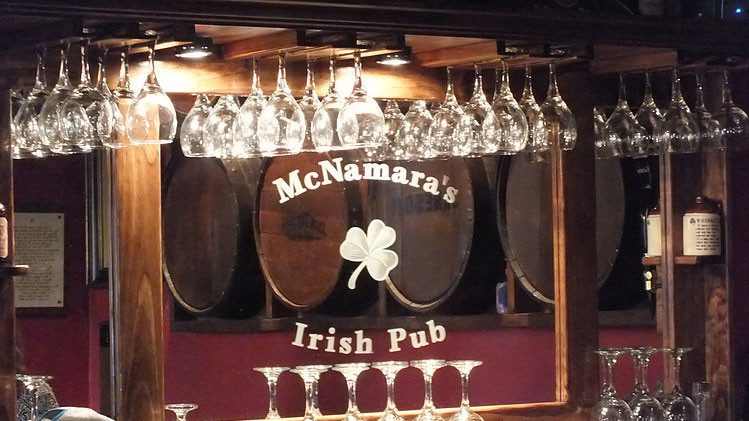 Sean and Paula McNamara opened McNamara’s Irish Pub and Restaurant in the Donelson area of Nashville in 2010. The pub’s success is reflected in the expertise the two bring to the table: Paula was born and raised in County Down in Northern Ireland, and is an veteran of the hospitality industry. The inviting atmosphere and cozy decor reflect her attention to detail. Sean is a second-generation Irishman, who moved to Nashville from the Northeast to pursue his love of folk music. The fact that McNamara’s boasts fantastic live traditional music in their main room Wednesday through Sunday, often featuring Sean’s Irish Band, Nosey Flynn, is a testament to Sean’s discerning ear. The main room also serves as a venue for noted Irish musical acts to perform at when passing through Nashville. But hosting stage acts, serving authentic pub fare, and featuring a wide selection of Scotch and Irish whiskeys wasn’t enough. Within a few months of opening, Sean reached out Irish fiddler Bill Verdier and Irish flutist Bill Wolfe to add the final magical touch to the pub: a seisiún.
Sean and Paula McNamara opened McNamara’s Irish Pub and Restaurant in the Donelson area of Nashville in 2010. The pub’s success is reflected in the expertise the two bring to the table: Paula was born and raised in County Down in Northern Ireland, and is an veteran of the hospitality industry. The inviting atmosphere and cozy decor reflect her attention to detail. Sean is a second-generation Irishman, who moved to Nashville from the Northeast to pursue his love of folk music. The fact that McNamara’s boasts fantastic live traditional music in their main room Wednesday through Sunday, often featuring Sean’s Irish Band, Nosey Flynn, is a testament to Sean’s discerning ear. The main room also serves as a venue for noted Irish musical acts to perform at when passing through Nashville. But hosting stage acts, serving authentic pub fare, and featuring a wide selection of Scotch and Irish whiskeys wasn’t enough. Within a few months of opening, Sean reached out Irish fiddler Bill Verdier and Irish flutist Bill Wolfe to add the final magical touch to the pub: a seisiún.
Irish seisiúns, such as they appear in the current day, became popular with Irish immigrants on both sides of the Atlantic in the 1950’s, particularly in London and New York. Playing tunes with friends over a pint at the pub at the end of the week was both a way to relax, and a way to bond with other folks from the home country for a bit of reminiscing. First, second, and third generation Irish men and women have grown up attending and participating in seisiúns, and the infectious joy of traditional Irish music has spread to those without any Irish heritage at all. The Irish music and dance spectacle Riverdance that debuted in 1995 helped spark interest in Irish arts around the world, inspiring seisiúns in pubs from Moscow, to Tokyo, to Rio de Janeiro.
Over the years, seisiúns have developed a certain amount of etiquette required from the participants. This includes having an established leader or leaders of the seisiún who
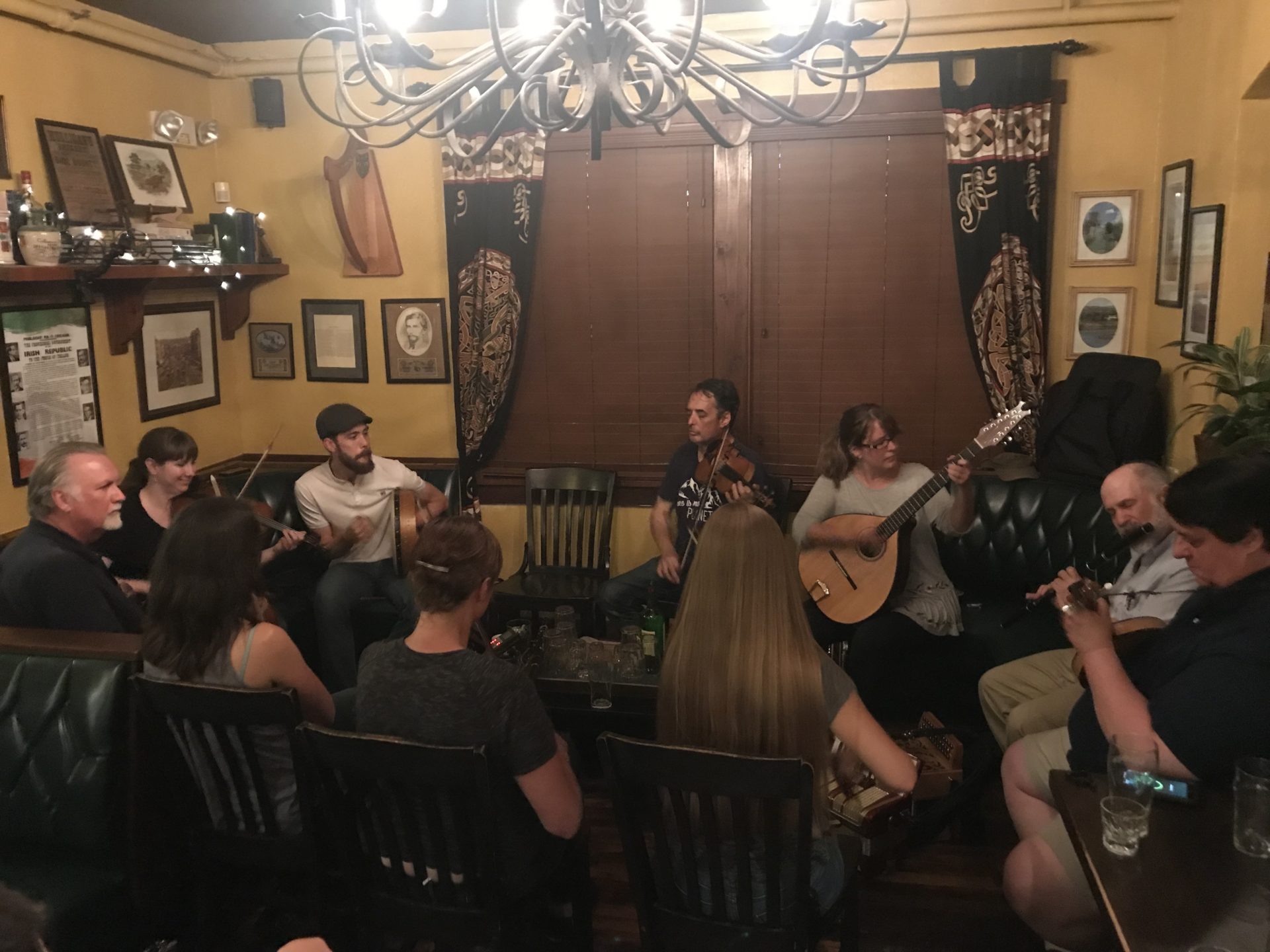
chooses the sets of tunes to be played, and limiting the number of bodhráns (frame drums covered in goats hide played with double ended mallets, or tippers), guitars, or bouzoukis playing at any given time so that melody instruments are not overwhelmed by competing accompaniment. If the seisiún leader invites a singer to sing, the entire group of musicians (and often the whole pub) will pause their conversations to listen respectfully; once concluded, the riotous tunes and background chatter will start back up. Unlike Bluegrass music, Irish music does not rely on improvisation. Melody instruments are expected to play in unison, and players will jump in and out as they know the tunes being called.
Nashville has a long tradition of supporting folk music, but the seisiún scene didn’t coalesce until 1995, when an English pub called Sherlock Holmes opened on Elliston Place. A small group of Irish musicians, spearheaded by the aforementioned Bill Verdier and Bill Wolfe, started a weekly seisiún that grew until the pub closed its doors in 2006. At that point the seisiún changed venues to the (then) recently opened 12th South Tap Room, where it remained until finding a home at McNamara’s. It appears to be a mutually beneficial arrangement; pub regulars don’t expect a stage show, but they come to listen to players, young and old, joyfully wend their way through tunes that trace their lineage back two hundred years or more.
Over the nine years that the seisiún has resided at McNamara’s, many luminaries of the global Irish music community have stopped by to share tunes, and several have made Nashville, and this seisiún, home. Cities such as New York, Boston, or Chicago have many competing seisiúns; so much so that one could go to a different seisiún every night of the week. Nashville may not boast a large number of seisiúns (at the time of this writing there are three seisiúns in the Greater Nashville Area), but the people and the music at the McNamara’s seisiún are world class.
McNamara’s Irish Pub and Restaurant can be found online at mcnamarasirishpub.com. The seisiún occurs every 2nd and 4th Tuesday of the month, from 7:00 -9:30 pm. This is a closed seisiún, meaning it is suitable for advanced level players and is invitation only. Beginning level players are encouraged to check out the seisiún and instruction offerings at the Fiddle and Pick Musical Heritage Center, Fiddleandpick.com. A Pocket History of Irish Traditional Music by Professor Gearóid Ó hAllmhuráin is a fascinating read for those wanting more detailed information about Irish music, musicians, and instruments.
Traditions in Music City
Old Jams, New Jams, Blackberry Jams, and Blues
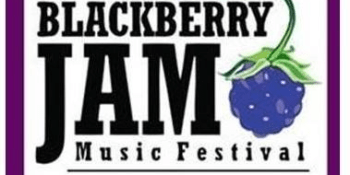
***This article is part of a new series, Traditions in Music City, which will focus on the many and diverse musical traditions happening around Nashville. Instead of a critical focus, they will seek to communicate the history and sense of community in an event.***
On Saturday, June 22, 2019, the sleepy village of Leiper’s Fork saw its 16th annual Blackberry Jam Music Festival. With the previous night’s harsh weather and morning rain, it was uncertain whether the event would proceed, and attendance was low for the first couple of hours. However, the small group of hands-on, dedicated volunteers and performers and their love for making music and benefitting their community showed out and made it clear that a little rain couldn’t halt their parade.
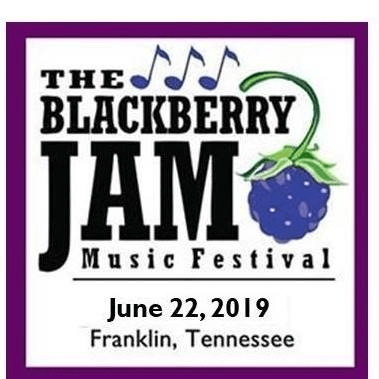
Beginning with the Viva! NashVegas radio show, the festival segued into the children’s program. Though clearly for kids, the children’s program was enjoyable for people of all ages. For those uninterested in singing about cows and roly polys, the program was scheduled at noon, so it was the perfect time to check out the food truck offerings, which included trucks specializing in barbeque, burgers, ice cream, coffee, and a stand serving cotton candy.
By 1:00, the festival had picked up many more attendees, and the children’s program had the lively performers Farmer Jason and Roger Day to amp up the younger audiences for the day’s remaining performances. Though aimed at children, their performances transcended generational lines and were certainly fun for the whole family. “Ode to a Toad” (Farmer Jason) and “Roly Poly” (Roger Day) were hits with everyone. Giri and Uma Peters performed very well between Farmer Jason and Roger Day with Uma on clawhammer and gourd banjos and Giri on fiddle and guitar. The sibling duo is a prime example of how the small, yet high quality festival allows young, early-career musicians to perform in the same setting as critically acclaimed musicians with extensive accolades.
In addition to these emerging talents (who already have a recorded album and are actively touring), the stage was graced by a Grammy winner (Lee Roy Parnell), CMA award winners (Parnell, Lockwood Barr) and members of the Library of Congress “Americana Women: Roots Musicians – Women’s Tales and Tunes” MusicBox Project (Jackie Merritt and Resa Gibbs of the M.S.G. Acoustic Blues Trio), not to mention Farmer Jason and Roger Day, who both have a lengthy list of accolades when it comes to children’s music.
After the children’s program, Tray and Jo Ann Eppes kicked off the rest of the show with some bluesy original songs. Seasoned veterans of the Blackberry Jam stage, they make the yearly trip to Leiper’s Fork all the way from their home in Central Virginia where Tray runs a pottery studio, in addition to making music on the road.
The next performer to grace the stage was Lockwood Barr. According to Music Row Magazine, the 2016 CMA Emerging Artist award winner “has the goods”, and I believe them. Barr’s music ranges from soft and sweet to fierce and emphatic (think Underwood’s Before He Cheats), and often writes from a personal place about tough subjects like suicide, and it is easy to connect with her and her music as an audience member. To a young adult audience, bluegrass and country is often considered old hat, but Barr’s vocals and visual branding seems to make the music more relatable to a wider audience without sacrificing what makes her music bluegrass.
Reckless Johnny Wales and the Hip Replacements (in which “Hip” can be read as either a noun or an adjective) provided a refrain from the gentler blues of the Eppes duo and the softer vocals of Lockwood Bar. The next group, Heavy Drunk and the Hurricane, was lacking six members of its nine-strong group, but still rocked the stage with both beautiful vocal harmonies and. Their simple yet emotional rendition of “Georgia On My Mind” provided a soulful contrast to some of the more robust blues of the festival.
Next on the program was Carol and Dale, owners of the Boyd Mill Farm and the hosts of the Blackberry Jam. The lovely Boyd Mill Farm has always been the venue for the festival. Carol Warren and Dale Whitehead founded the festival in 2003. The venue, though outdoors, had a unique intimacy that made the connection between performer and audience easygoing. Carol and Dale’s performance was delightfully upbeat, likely because the bass (Carol is a bassist) was more prominent. Unfortunately, Carol and Dale’s performance was cut a little short due to impending rain, so we were instructed to return to our vehicles until it passed. Though many people chose to leave at this time, when the festivities started up again, it seemed that there were more people than before.
Baillie and the Boys (Kathy Baillie, Michael Bonagura, and Alan LeBoeuf) were the next performers, and the combination of Kathy’s light but powerful vocals and the ominous sky created an electric atmosphere to usher in the evening. Baillie and the Boys played a more straightforward country set and typically sang in a three-part harmony, with songs like “The Road that Led Me to You” and “She Deserves You”.
Freddie and Francine followed their act with an excellent acoustic duo. Though some have described them as a pop band, their style seems difficult to pin down, and their website would argue the same. Primarily branding themselves as “folk,” Freddy and Francine’s vocals and stage presence represent a unique blend of folk and country and maybe even pop, but rather than pigeonhole them I would say they have a certain je ne sais quois that sets them apart.
Beyond quality music and food trucks, the festival has been dedicated to giving back to the community. From the beginning, the festival donated proceeds to an assortment of
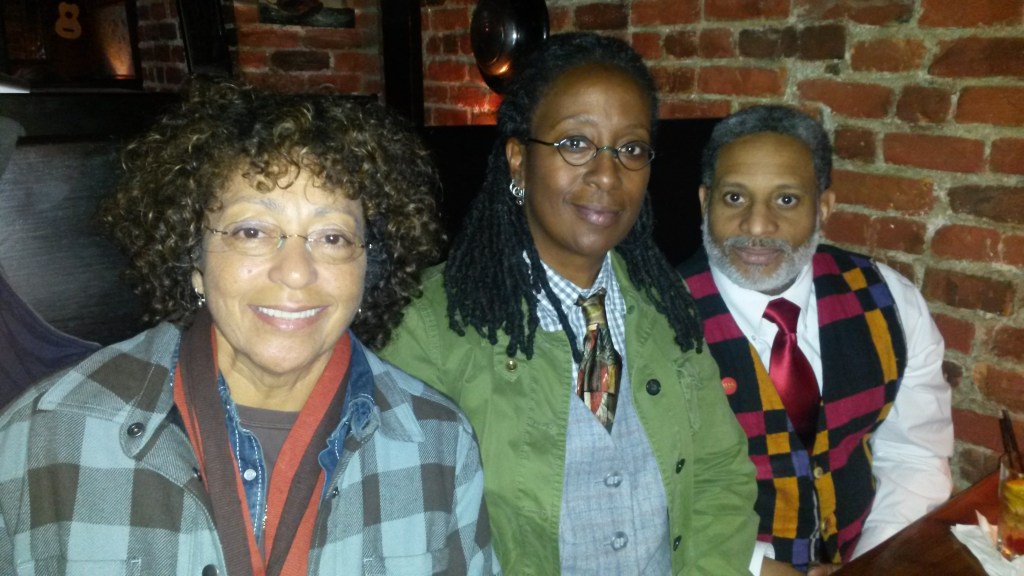
charities, but since 2009, all proceeds from the festival have been donated to the Hard Bargain Association, an organization dedicated to rehabilitating existing homes and building new, affordable homes in the historically African-American Hard Bargain neighborhood in Franklin, TN. Last year, the festival donated $8,000 to the Hard Bargain Association, and it will be exciting to see the outcome for this year.
Perhaps one of my favorite performances of the day was that of the M.S.G. Blues Trio, who travelled to the festival from the D.C. area. Comprised of Jackie Merritt, Miles Spicer, and Resa Gibbs, this group emphasized audience participation. As dusk set in, their performance was on the porch of the house at Boyd Mill Farm, and the audience was able to move closer and experience their music in an even more personal setting. Audience favorites were “Glory Glory, Hallelujah” and “Mean Church People”, the latter being a playful jab at churchgoers with a holier-than-thou mentality. The final performance was by Lee Roy Parnell, whose clear vocals, Texas twang, and slide guitar playing rounded out the evening.
If you haven’t been to the Blackberry Jam Festival before, I would highly recommend doing so. The music is phenomenal, the atmosphere is friendly and fun, and it is place where you can truly feel like part of the Middle Tennessee music community. The festival is every fourth Saturday in June, so keep it in mind!
Fiddler on the Roof at TPAC
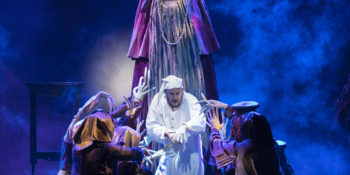
Fiddler on the Roof at TPAC
On Tuesday, I took a short step away from the classical music world, and enjoyed a magical night of Broadway! TPAC is currently rounding out its season with the classic Fiddler on the Roof, a story of a Jewish dairyman, his five rebellious daughters, and the deeper struggles of a Jewish community in early 20th century Russia. Fiddler is well-known and well-loved by many, and this company certainly “raised the roof” with their energetic and heartfelt performance.
The show opened on Tevye (played by Yehezkel Lazarov) , the dairyman, as he explained the traditions of the Jewish community in the village of Anatevka. From the moment he spoke his first lines, it was clear Mr. Lazarov was perfect for this role and would tell the story with tons of charisma. The scene then unfolded into a full-cast musical number
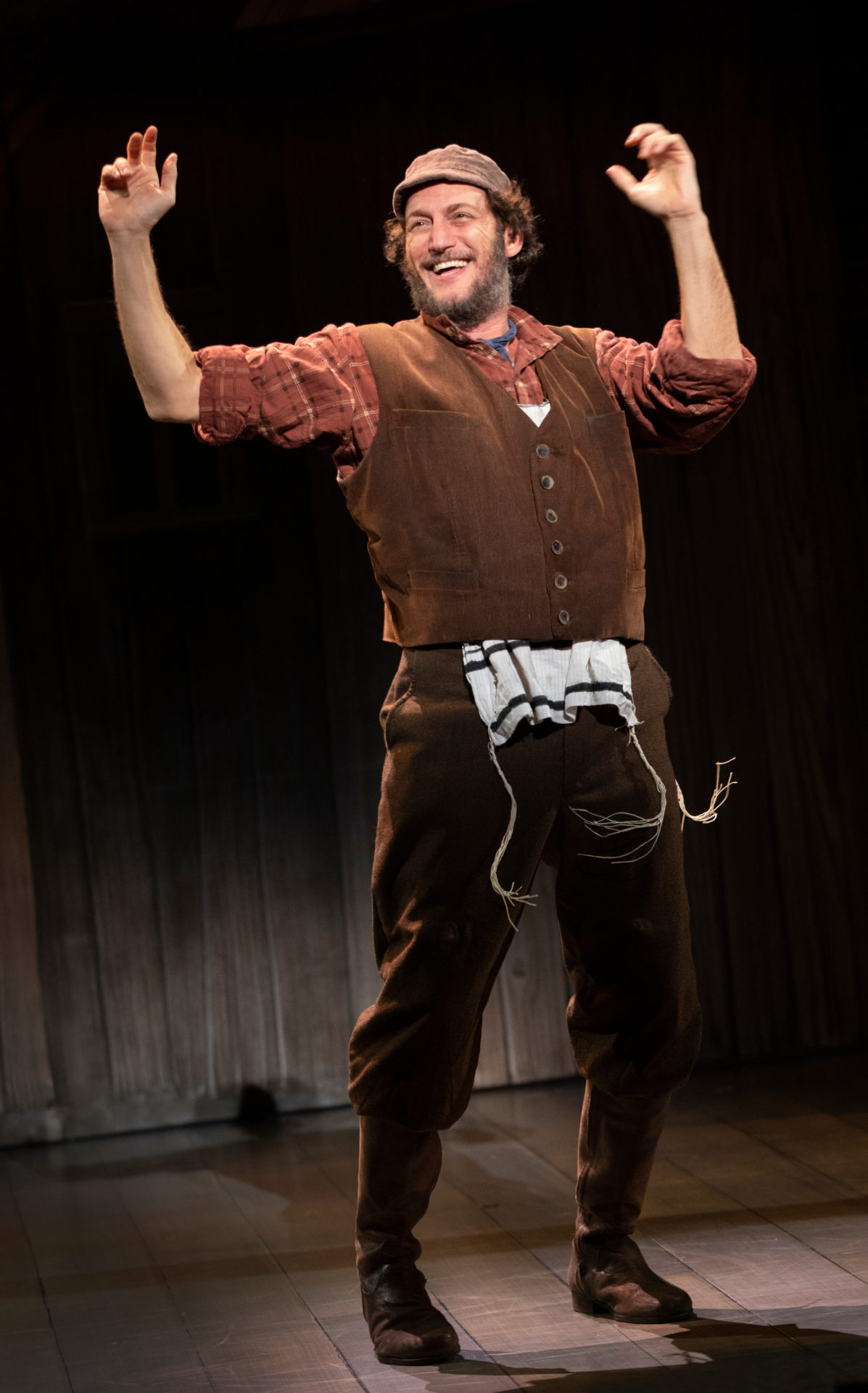
(“Tradition”), which was the true moment the audience was captivated for the night. It was quite a wall of sound, with timbres and harmonies absolutely perfect for a Broadway show.
Next came “Matchmaker, Matchmaker,” which featured the eldest three of Tevye’s daughters, Tzeitel, Hodel, and Chava. The chemistry between the three women onstage was phenomenal, and perfectly captured the quarreling of siblings as well as the genuine fear of having no say in an arranged marriage.
Shortly after, we transitioned to arguably the most famous scene of the entire show, “If I Were a Rich Man,” which was yet another opportunity to showcase Tevye’s personality. While there was a note of sincerity that rang true the entire time, the scene was full of a playful sort of sarcasm that really brought everything together and made it interesting. It was nearly impossible to look away while Mr. Lazarov was onstage.
The next notable moment of Act I, and quite possibly my favorite scene of the entire production, was “Tevye’s Dream,” in which he recounts a false dream to his wife Golde in order to ease her into the idea of Tzeitel marrying Motel, a poor tailor that Tzeitel loves, as opposed to Lazar Wolf, a rich butcher arranged by the Matchmaker. The chorus was outfitted in grotesque costumes to resemble Golde’s deceased ancestors, and many were on stilts in order to appear larger than life. It was truly frightening and so different than the rest of the show, which made for an breathtaking scene. Olivia Gjurich, who played the dead wife of Lazar Wolf, harnessed a kind of chaotic energy perfect for the scene, and had the vocal technique to pull it off wonderfully. I truly wish that we could have seen more of her in a solo role!
Act I ended with Tzeitel and Motel’s wedding, which was complete with truly impressive dance numbers! All of the extended dance sequences throughout the show were high-energy and athletically challenging, and it was truly a treat to behold! The tensions between the Jewish community and the Russian law enforcement presence came to a head in this scene, with the soldiers and Constable (played by Jeff Brooks) participated in a small pogrom at the wedding. Mr. Brooks held character extremely well and instilled a sense of fear in everyone in the audience, reminding everyone of the overarching conflict in the show. It felt a bit strange to clap after the seriousness of this scene, but Act I was too fantastic to not show any appreciation.T
Act II opened with Tevye’s second daughter, Hodel, announcing that she will be marrying Perchik, a traveling student and radical that has been staying with the family. This goes against all previous traditions, but after another passionate monologue, Tevye agreed to the union. The chemistry between Hodel (played by Ruthy Froch) and Perchik (played by Ryne Nardecchia) was fantastic, and it was quite sad that we did not get to see more of them together onstage!
After this one happy moment, Act II definitely took a turn for the darker, with Tevye’s third daughter Chava, announcing that she wishes to marry Fyedka, one of the Russian officers in the town. Although Tevye accepted many things that went against tradition, marrying outside of the Jewish faith was too far. While Mr. Lazarov kept his role pretty

light-hearted, he transitioned perfectly to an angry, broken character as he announced his daughter was “dead to him.” It was an extremely emotional performance, and perfectly captured the struggle between tradition and acceptance.
The show continued down this darker path, with the conflict ending with the entire village in Tevye’s barn as the Russian authorities close in, informing them all that they must sell their properties and leave the village in three days. All of the actors in the company perfectly captured this shift in mood, and effectively showed that nearly all other conflicts pale in comparison to this. The show ends with everyone in the village packing their homes and leaving, discussing their destinations and saying what are clearly their final goodbyes. Tevye even seems to concede and accept his daughter Chava once again, although the family is separated in the end. Much like Act I, it feels a bit strange to clap at the end of this show, but it is truly effective in creating such a strong feeling of sadness and fear.
All in all, this was a stellar performance of Fiddler on the Roof. The cast was wonderful, particularly the leads, and the show featured so many amazing dance numbers and such powerful chemistry between actors (namely Tevye and Golde)! The sets and costumes were also beautiful and fitting, and really added the final touch to the acting and music. Aside from a few minor problems that can easily be chalked up to it being opening night, it was one of the better productions that I have seen. I cannot think of a better way for TPAC to end their season.
The show runs through Sunday, June 30, with two performances on Saturday and Sunday. I assure you that it is well-worth seeing!
Something New, Now and Then: Novel Noise with ALIAS

For classical music’s younger audience and artists, a distinctly pressing question can frequently come to mind. It is a simple one that seems like it wouldn’t be so frustrating when taken at surface value, but I would risk saying many musicians and enthusiasts my age have come across it more than a few times by this point in their engagement of classical music. The pest of a question: Where can I hear something new? Recital environments can have a predictably standard literature. Symphony Orchestras keep up a constant rotation of Beethoven, Bernstein, Mahler, and any other name out of the old guard; occasionally tossing in the score of a film or video game to help keep the lights on. Opera companies roll out any two Mozart favorites per season. None of this, of course, is necessarily a bad thing. Such masterpieces are beloved for a reason and it is hard to get truly bored of them. Still, there is a feeling in hearing something you have never come across before that is undeniably magical. On Tuesday night, June 4, 2019, in the intimacy of the sanctuary of a synagogue, the chamber ensemble ALIAS offered a stirring answer to such a problem.
As the conclusion to their 17th season, and the latest installment to their Novel Noise series, ALIAS played a program that was delightfully underpinned by a unique kind of freshness; the careful juxtaposition of old and new. Even well-loved standards in chamber music repertoire were colored by new and thoughtful interpretations. Pieces as aged as J.S. Bach’s St. Matthew Passion were programmed right alongside two world premieres, both featuring electronic instrumentation as their centerpieces.
The night opened with “Erbarme Dich” from the above-mentioned St. Matthew Passion, followed without much pause by John W. Work’s arrangement of “This Little

Light of Mine” by Harry Dixon Loes. Both were performed by countertenor Patrick Dailey and a string trio of violin (Zeneba Bowers), cello (Matt Walker), and theorbo (Francis Perry). The trio performed in baroque tuning and used baroque bows, which gave a very unique color to the more contemporary sound of Work’s “This Little Light”. Dailey’s soaring countertenor ebbed with the trio exquisitely and overflowed with expression. While sometimes not perfectly in control, the color and spin of Dailey’s singing landed with heartbreaking beauty. One can also appreciate the clever programming; where an aria on Peter’s denial of Jesus is followed by the evangelical poem of “This Little Light of Mine”.
“Lihim”, a cello quartet by Larissa Maestro kept the deeply expressive warmth of the night going with frequent pauses and unpredictable but satisfying harmonic turns until its conclusion; warm and resolute, but with no compromise in tension. It gave a nearly cyclical impression of joy and melancholy, delicately expressed in the capable hands of the quartet. It was followed by Dmitri Shostakovich’s “Two Pieces for String Quartet”. The works of Shostakovich often find themselves performed with a degree of force and bombast. ALIAS’s interpretation left it out, favoring a heightened nuance in the two pieces. The first of the two, the Elegy, came with quiet calculation that felt like genuine weeping. The second, a Polka, could just have easily fallen victim to the excess of smirking growling that comes to the American mind when presented with Russian pieces. Instead, ALIAS found all of the piece’s engrained humor, smiling at each other and giggling in the most refreshing way.
“A Tree of Life”, a trio for clarinet, cello, and piano by Michael Alec Rose, weaves Ashkenazic musical tropes taught to Jewish children into a spiraling, turning, and at times prickling post-tonal landscape. The result is one of paradox where old melodic content clashes against new harmonic ideas. It combines into a deep impacting meditation on the confusing nature of spirituality in a new and unfamiliar time. As it was beautifully performed by the trio, I only wish I had a greater personal familiarity with the melodies themselves to fully grasp there relationship to the surrounding textures.
The final two pieces were in their premier performance and brought, by far, the most surprising pallet of sounds. “Freya” by Kris Wilkinson and Tim Lauer is a musical depiction of the title goddess; a goddess with paradoxical associations of death, fertility, war, beauty, wealth, and magic. The resulting musical ideas carried all the allure of its programmatic source, and listeners are sure to feel an overwhelming sense of both beauty and danger. At the heart of the piece was a host of electronic instruments. Using an Omnichord, a Theravox, a synthesizer, and an electric kalimba, Wilkinson and Lauer create an environmental texture that could never be found with standard instrumentation. The combination of instruments lends a mysterious fog to each sound and builds a distinct expressive core for the piece. Violinist, Alicia Enstrom, added an incredible color with playing that seemed to alternate between orchestral nuance and the growl and grit of a Nordic Hardanger fiddle. Together, the
pAlicia Enstromassorted elements create something that is both modern and viscerally primal. “Thrash Early” by Jesse Strauss continued the new pallet of sounds provided by electronic instrumentation. Built off the vibraphone and marimba, the addition of sensory percussion and a modular synthesizer created a cavernous, mystifying
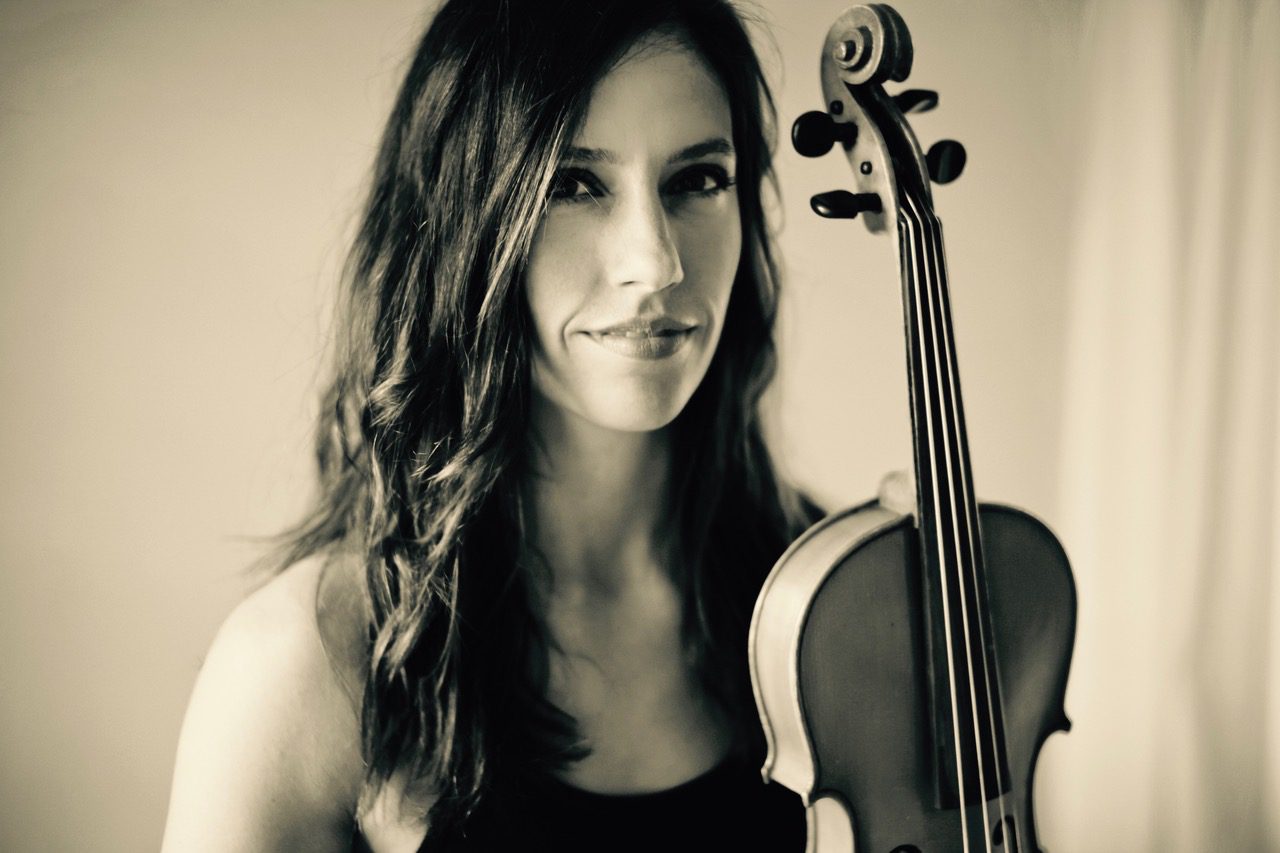
ambience. The opening section lured in the audience with no traceable sense of meter and true expressive fluidity. This soon gave way to a pulsating, rhythm driven second section, focused on a haunting and vivid melodic figure and peppered with sub-bass swells in the synthesizer. The integration of modular synthesis added a special layer of intrigue, as every bizarre manipulation of sound happened before the audience’s eyes in real-time. Both premier pieces presented a striking answer to what comes next in the world of classical music.
In the end, it was impossible to leave the performance without some sense of genuine awe at what had just happened. Every element felt fresh. Whether centuries old or only made possible by technology introduced a matter of decades ago, each performance kept a perceivable crispness that is rare in other concert material. There is something transcendent about old and new meeting that thrives in the world of classical music, and better still an ensemble that can embody that; that can be both in touch with the traditional, yet exist on the bleeding edge of an art. As nice as old standards can be, nothing is more stirring and essential than hearing something new and unfamiliar from time to time. ALIAS’s performance at Congregation Micah on Tuesday night encapsulated exactly that, and was, in turn, absolutely thrilling.
Classical Reviews
The Nashville Symphony Presents Carmina Burana

On Saturday, June 1, the Nashville Symphony gave a special performance of Carl Orff’s Carmina Burana, featuring the Nashville Ballet, Nashville Symphony Chorus, and Blair Children’s Chorus. The program also featured Joan Tower’s Sixth Fanfare for the Uncommon Woman and Jonathan Leshnoff’s Symphony No. 4, “Heichalos.” All four performances were sold out, and with good reason: this was quite possibly the greatest concert of the Symphony’s season.

Joan Tower composed Sixth Fanfare for the Uncommon Woman in 2007, after a nearly 20-year hiatus from composing the other five Fanfares, to honor the Baltimore Symphony’s centennial season. Like the other five Fanfares, this piece was dedicated to a woman who “decided to take risks” and “is adventurous.” Tower’s Fanfares are quite popular, and have been performed by more than five hundred ensembles around the world. Her success doesn’t stop there: Tower was the first woman to ever win the Grawemeyer Award, and the Nashville Symphony’s 2008 recording Made in America, Tambor, and Concerto earned three GRAMMY Awards.
The piece began with a driving ostinato, which was kept steady and delightfully energetic throughout. As more voices were incorporated into the music, the blend and balance of the orchestra was phenomenal and created such interesting timbres. The orchestra also captured every shift in character, every high and low, and transitioned between them with masterful ease and facility. The energy of the ostinato persisted until the very end, which did not feel like a typical, definite ending. While this did not feel like a usual opener, it was very refreshing and well-performed by the orchestra.
Jonathan Leshnoff began the composition of his Fourth Symphony in 2015, and completed it in 2017. The piece was premiered by the Nashville Symphony in 2018, using the

Violins of Hope, a collection of restored string instruments played by Jewish Musicians during the Holocaust. This recording was recently released on CD. The symphony takes the listener on a meditative and spiritual journey once taken by many Rabbis, in which they traveled through “rooms” in order to communicate with the Divine. The music is in two distinct parts: the first, a dark representation of knowing all that happens in the world, and the second, which Leshnoff describes as a “love song between humanity and God.”
The first part opened with an extremely dissonant and emotional opening, which includes an impressive trombone feature that progressed into powerful, full-brass chords. Difficult mixed meter string passages formed the steady, driving motive of the piece, and were executed with ease by the symphony. All of the timbres accurately captured the dark, somber mood, which was convincingly sustained throughout by the full orchestra. A refreshing character shift that featured the masterful blend of the clarinet and piano lightened the mood just before an exciting push to the second part. All of these shifts and emotions were beautifully captured and displayed by the Nashville Symphony, and definitely conveyed the thoughts and emotions of the composer.
The second part opened very differently than the first, and focuses the attention of the audience on the delicate melodies in the strings, particularly the violins. After just a few bars, it was easy to understand why the piece was written for a premiered using the Violins of Hope. The audience seemed to be absolutely captivated by these almost ethereal melodies, and were only brought back to reality as the pizzicato notes in the bass lightly broke the spell. Beautiful blend and balance in the violas and cellos lead seamlessly into the full orchestra’s entrance, and was done so effortlessly by the symphony. The excitement and energy built relentlessly to a triumphant climax peppered with chimes, and was eventually topped again by full, orchestral chords with organ for extra thickness. It was truly an impressive wall of sound that clearly depicted what the composer intended. Soon after, it subsided into the same delicate string melodies and sustained chords as the beginning, and once again captivated the audience until the very end. Leshnoff’s Symphony never seemed to go quite where the audience expected, but the piece definitely did not disappoint, and received a well-deserved standing ovation.
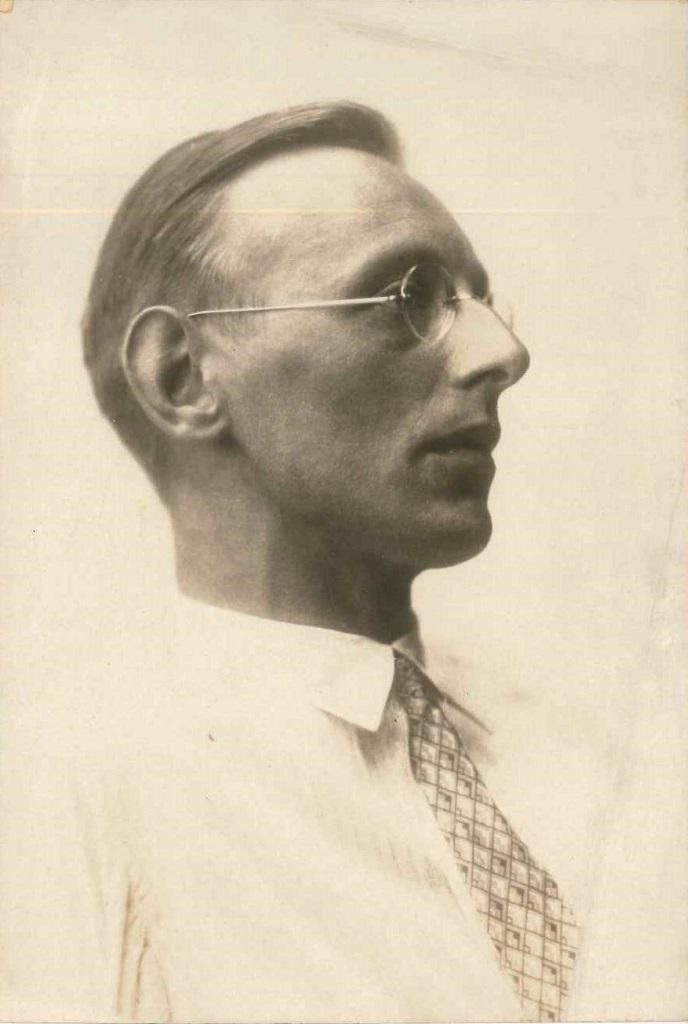
Carl Orff composed Carmina Burana in 1935 and 1936, and the piece was premiered in 1937. Orff’s intention was to include all of the performing arts into one spectacle, and even incorporated backdrops, costumes, and lighting in the performance, and labeled it as a “scenic cantata.” The inspiration for the piece came from an anthology of medieval poems that Orff found in a rare bookstore, entitled Carmina Burana. After its premiere, Carmina Burana was criticized for its graphic sexuality, but also recognized as an example of populist new music during the Third Reich. This, along with Orff’s opportunism during these years, has somewhat tainted the music, although it has remained widely popular and used commercially.
The opening O Fortuna was both extremely powerful and visually stunning. The costuming, lighting, and film by Duncan Copp added so much to the well-known music that it felt as though I was truly experiencing Carmina for the first time all over again. All of the members of the Nashville Ballet danced beautifully and conveyed the story and moods of the piece much better than words and music alone ever could. The music, however, was also fantastic as always. The Nashville Symphony Chorus performed with so much energy, clear diction, and masterful blend. The orchestra sounded wonderful despite being in the pit, and balanced with the Symphony Chorus quite well.
What truly made the performance spectacular, however, was the immersive experience. The film, ballet, orchestra, and chorus combined created such a spectacle onstage, which was complemented by vocalists in other locations around the hall. The Blair Children’s Chorus provided a surround sound-like effect from the back of the hall (with wonderful tone and balance, too!). The three soloists, Valentina Farcas, John Logan Wood, and Stephen Powell, were positioned at different points around the hall, adding more to the experience. I had the pleasure of sitting directly behind Stephen Powell as he sang Dies, nox et omnia in one of the aisles, and it was truly a breathtaking experience.
Words simply cannot do this performance justice. Of all the Nashville Symphony concerts I have attended, this was certainly one of the most interesting and memorable. I am certainly looking forward to more programs like this in the future! There could not have been a more perfect way to transition into the summer season.
Carmina Burana: A Discussion with Steve Brosvik, COO of the Nashville Symphony
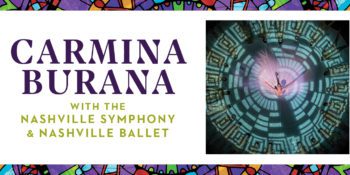

Last week, we had the opportunity to speak with Steve Brosvik, the COO of the Nashville Symphony, about the upcoming performance of Carl Orff’s Carmina Burana. Not only does this concert feature both the Nashville Symphony and the Nashville Symphony Chorus, but it also shines a spotlight on the Nashville Ballet, Blair Children’s Chorus, and a handful of talented soloists. It was wonderful and quite interesting to hear what it was like to coordinate this large, spectacular performance from his perspective.
[MCR]: What prompted the decision to involve the Nashville Ballet and Blair Children’s chorus?
[Brosvik]: Carmina Burana is a piece which requires adult and children’s choruses. We have worked with the Blair Children’s chorus for several other works and it made sense to keep that relationship in place for this production of Carmina Burana. We have a long-standing relationship with the Nashville Ballet, primarily focused on the Nashville Symphony playing in the pit for many of the Ballet’s productions each season. A few Ballet companies have their own orchestras and many companies use pre-recorded music. The Nashville Ballet is one of the companies that works with the primary Symphony in its community and we believe it to be a deep, musically fulfilling, and creative partnership. We have explored the relationship in a couple of different ways and this project is the next step in that evolution. We hope that the audience members are as excited about the final product as we are and we hope that this is only one of many artistic partnerships we can foster together and throughout Nashville.
What inspired the decision for a choreographed version of Carmina rather than the traditional staging?
The Symphony has performed the work 11 times since 1957 including three performances runs with the Nashville Ballet at TPAC. This work is an audience favorite and was originally written with the intention that it would be danced. The performance at the Schermerhorn in March of 2016 including Appalachian Spring, Vivaldi’s Four Seasons, and Prokofiev’s Romeo and Juliet were the first step in seeing how we could stretch the Schermerhorn with the combination of orchestra and dance. Those performances opened a window of creativity for us that we are exploring further with this new production.
Were there any challenges when planning the concert/coordinating with other ensembles? How were the challenges overcome?
This production is a feast for the senses and coordinating all of the elements to form a richly cohesive experience instead of sensory overload had to remain a continued focus. Collecting this particular combination of artistic elements forced us to think through the technical solutions multiple times to find the best arrangement of those elements to give the audience members the most enjoyable experience possible. Where to hang the screens, how to add the additional lighting necessary to create the effects envisioned by the original lighting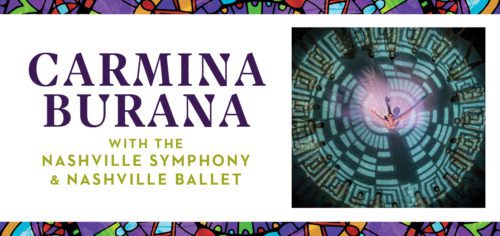
This project has stretched us to find new ways of working with each other, to refine what we are already doing, and to discover new ways to make work together in new directions. For instance, the Appalachian Spring performance at the Schermerhorn had both the Symphony and Ballet Company sharing the stage. For Carmina Burana, we are taking advantage of our movable seating system and storing multiple rows of seating in the lower level of the building to create a kind of orchestra pit from where the full Symphony will perform during the second half of the concert. This frees the entire stage to make room for the dancers. The Ballet is bringing their sprung dance floor to be placed over the stage. We needed to take this into consideration when programming the first half of the concert in order to avoid damaging the sprung flooring.
What has been the most rewarding part of watching this event come together so far?
Reaffirming that each time we hit a decision point, that everyone kept putting the quality, creativity, and quality of the project before individual opinion. Our creative relationship is stronger now than when we began.
What will be the most exciting component of this production from the audience’s perspective?
We have coordinated the entire production around the elements and abilities of the Schermerhorn. The audience is going to feel immersed in the experience and directly connected to the music, the dance, and the imagery.
What qualities make this performance an ideal community event? What about this program would appeal to someone that isn’t the average symphony-goer?
I think that everyone knows more classical, or orchestral, music than they know. Carmina Burana is a piece with themes so popular that they are used in movies, television, and commercials. We think this program has something for everybody and think it will appeal to both brand new, and experienced audience members.
If you would want an audience member to know one thing about this production before the performance, what would it be?
The history of the work is fascinating and there is a lot of information about the history of the piece and the poetry on our web-site and around the internet. You won’t need to know any of that to enjoy the performance. If you have a little time, however, understanding a bit of that will only add to the experience.
What kind of community partnerships do you and the Symphony have planned for next season?
We are already working on a very large cooperative project for the fall of 2020. We hope to be able to say more about that soon but, for now, I will just say that the project will combine multiple organizations working on a single project and theme.
By the sound of it, this concert will be highly exciting for all members of the audience! A large-scale performance such as this does not happen very often, so you don’t want to miss out! Carmina Burana will run for four performances, beginning Friday, May 31, and ending Monday, June 3. Tickets are still available for all four nights.

